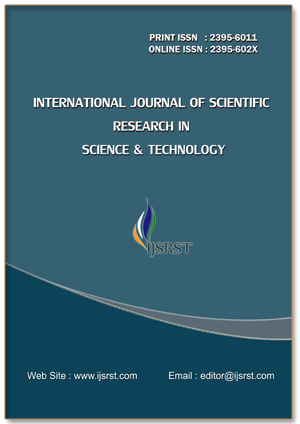A Review of In-Vitro Analytical Methodologies for Accurate Moisture Content Measurement in Pericardium Tissue
DOI:
https://doi.org/10.32628/IJSRST251222746Keywords:
Near-Infrared Spectroscopy (NIR), Biocompatibility, Thermogravimetric Analysis (TGA), Structural Integrity, Bovine Pericardium Patch, Gravimetric Moisture Determination, Preservation Techniques, Performance OptimizationAbstract
Bovine pericardium is widely used in medical device applications, particularly in the production of bioprosthetic heart valves, due to its exceptional properties such as high tensile strength, flexibility, and biocompatibility. The moisture content of this tissue plays a crucial role in determining its mechanical properties, stability, and overall performance in medical devices. This article presents an overview of the analytical methods for measuring moisture content in bovine pericardium and highlights their importance in ensuring the quality and safety of medical products. The aim of the study was to assess the moisture content in bovine pericardium using standard analytical techniques, with a focus on the impact of moisture levels on the material's performance. The objective of this experiment was to determine the moisture content of pericardium tissue samples by calculating the difference in weight before and after drying. This test aims to provide an accurate measure of tissue hydration under controlled conditions. Additional methods reviewed include Near-Infrared Spectroscopy (NIR), Microwave Drying, Karl Fischer Titration, and Thermogravimetric Analysis (TGA). The results of the moisture content testing demonstrated that the average moisture content across various samples of bovine pericardium was approximately 73.47%, with a range between 73.1% and 73.8%. These values are consistent with the optimal moisture content required for maintaining the material's flexibility and strength. The study concluded that regular monitoring and precise control of moisture content are essential for ensuring the structural integrity and performance of bovine pericardium-based medical devices. Standardized testing and adherence to regulatory standards are critical in maintaining the quality and safety of these products. Future research should explore advanced preservation techniques to enhance the stability and usability of bovine pericardium for biomedical applications.
📊 Article Downloads
References
Tambella, Victoria, et al. "Biomechanical and histological evaluation of a prototype bovine pericardial patch for veterinary abdominal surgery: An approximation study." Tissue and Cell 91 (2024): 102565.
Rallapalli, Suneel, Aminu Musa Liman, and Soma Guhathakurta. "Hemocompatibility and surface properties of bovine pericardial patches: Effects of gamma sterilization." Current Medicine Research and Practice 6.6 (2016): 224-228.
Liu, Xiaojun, et al. "Structure characterization and performance evaluation of modified bovine pericardial scleral biological patch with genipin." Chinese Journal of Tissue Engineering Research 26.34 (2022): 5430.
Oswal, Dilip, et al. "Biomechanical characterization of decellularized and cross-linked bovine pericardium." Journal of Heart Valve Disease 16.2 (2007): 165.
Gallucci V., Bortolotti U., Milano A., Mazzucco A., Valfre C., Guerra F., Faggian G., Thiene G. The Hancock porcine valve 15 years later: an analysis of 575 patients. In: E. Bodnar, M. Yacoub, eds. Biologic and bioprosthetic valves. New York : Yorke Medical Books, 1986; 91 – 97.
Pelletier LC, Carrier M., Leclerc Y., Lepage G., de Guise P., Dyrda I. Porcine versus pericardial bioprostheses: a comparison of late results in 1593 patients. Ann Thorac Surg 1989; 47: 352 – 61.
Liao, Kangxiong, et al. "Bovine pericardium versus porcine aortic valve: comparison of tissue biological properties as prosthetic valves." Artificial organs 16.4 (1992): 361-365.
K.Brendel, R. C.Duhamel, J. M.Malone and R. L.Reinert, “Vascular Graft Update: Safety and Performance, ASTM STP 898”, edited by Helen E.Kambic, AdrianKantrowitz and PeiSung (American Society for Testing Materials, Philadelphia, 1986) p. 219.
Zhao, X., Wei, C., & Wang, L. (2017). Moisture content testing in biological tissues: Application of the gravimetric method. Biomaterials Science, 5(7), 1389-1395.
Deng, Y., Zhang, H., & Zhang, Y. (2019). A study on the moisture content of bovine pericardium and its applications in biomedical engineering. Journal of Tissue Engineering and Regenerative Medicine, 13(5), 1160-1168.
Fraser, S., Edwards, H., & Jenkins, R. (2020). Near-infrared spectroscopy for tissue moisture content analysis: Techniques and advances. Journal of Biomedical Optics, 25(2), 023001.
Barrera, G., Gomez, R., & Torres, A. (2020). Microwave-assisted moisture content determination in tissues: A comparative study with traditional drying methods. International Journal of Food Science and Technology, 55(7), 2598-2606.
Lee, H., Ryu, S., & Kim, J. (2019). Comparison of moisture content determination in biological tissues using Karl Fischer titration. Pharmaceutical Research, 36(6), 94-103.
Cai, J., Xu, Z., & Zhang, J. (2020). Use of thermogravimetric analysis for the study of moisture content in biological tissues: A review. Journal of Thermal Science and Engineering Applications, 12(3), 045001.
Meuris, B. et al. (2017). A Novel Tissue Treatment to Reduce Mineralization of Bovine Pericardial Heart Valves.
Halfwerk, F. R. (2017). Supercritical Carbon Dioxide Decellularised Pericardium: Mechanical and Structural Characterisation for Applications in Cardio-thoracic Surgery.
Downloads
Published
Issue
Section
License
Copyright (c) 2025 International Journal of Scientific Research in Science and Technology

This work is licensed under a Creative Commons Attribution 4.0 International License.
https://creativecommons.org/licenses/by/4.0




